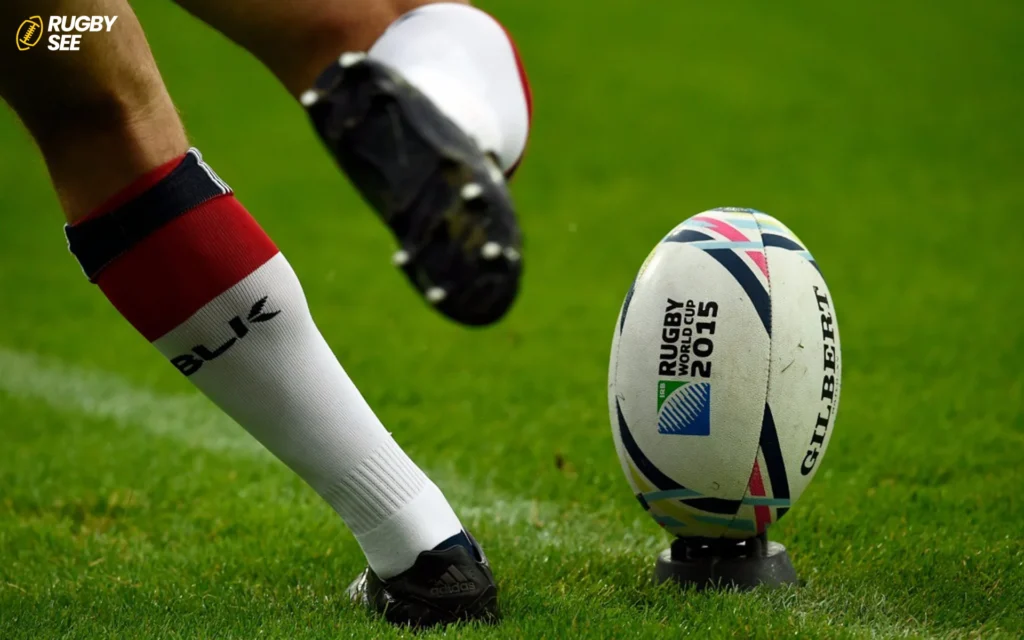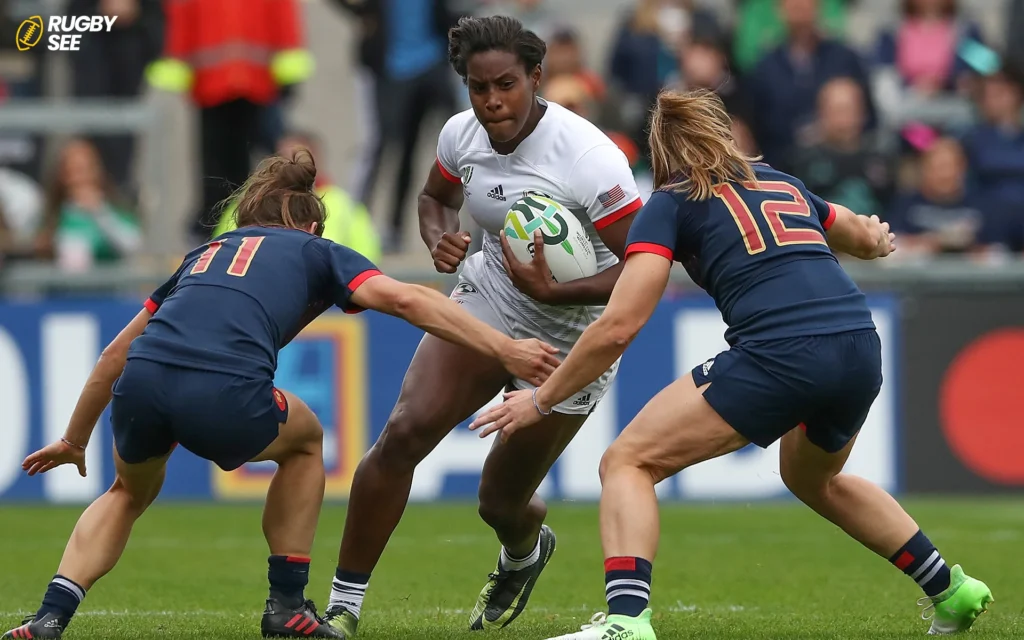Rugby is a sport that demands a unique combination of speed, strength, and stamina. To meet these demands, rugby players follow rigorous training and nutritional regimes to build muscle, improve endurance, and enhance overall performance. This article explores the key elements of how rugby players build muscle through specialized workouts, dietary strategies, and recovery techniques.
1. Specialized Strength Training Routines
Building muscle is crucial for rugby players to enhance power and tackle the physical challenges of the game. Here’s how they integrate strength training into their fitness routines:
a. Weightlifting Rugby players frequently engage in weightlifting sessions to build muscle mass and increase strength. Key exercises include squats, deadlifts, and bench presses, which target major muscle groups essential for rugby.
b. Powerlifting Powerlifting focuses on maximizing the amount of weight a player can lift in a single repetition. This training is crucial for developing explosive power needed during scrums and tackles.
c. Olympic Weightlifting This type of weightlifting enhances dynamic strength and explosive speed. Exercises like the clean and jerk and snatch are particularly beneficial for improving the rapid force production required in rugby.

d. Bodyweight Exercises Exercises like pull-ups, push-ups, and dips are also integral to a rugby player’s routine, providing a foundation of strength and endurance.
2. Conditioning and Agility Workouts
Muscle building isn’t just about strength; it’s also about functionality and agility. Rugby players incorporate various conditioning workouts to enhance muscle functionality and maintain agility:
a. High-Intensity Interval Training (HIIT) HIIT sessions involve short bursts of intense exercise followed by recovery periods. This type of training helps improve muscular endurance and cardiovascular fitness.
b. Plyometrics Plyometric exercises, such as box jumps and squat jumps, are crucial for developing lower body power and improving neuromuscular coordination, which are essential for quick, explosive movements on the field and if you want to know about Half Time read does rugby have half time.
c. Sprint Training Short and long sprints increase fast-twitch muscle fibers, crucial for the sudden bursts of speed in rugby.
3. Sport-Specific Drills
To build functional muscle suited for rugby, players also engage in drills that mimic the physical demands of the game:
a. Scrum and Tackle Drills These drills build the specific muscles used during scrums and tackles, enhancing a player’s ability to perform these crucial actions effectively.
b. Ball Handling and Passing Drills While not directly related to muscle building, these drills improve agility and coordination, making muscle strength more effective during game situations.
4. Nutritional Strategies for Muscle Gain
Optimal nutrition is essential for muscle growth and recovery. Rugby players follow specific dietary guidelines to support their training needs:
a. Protein Intake High protein intake is vital for muscle repair and growth. Players often consume protein-rich foods and supplements to meet their needs.

b. Carbohydrates Carbohydrates are the primary energy source for high-intensity sports like rugby. A diet rich in carbs helps sustain energy levels during training and matches.
c. Healthy Fats Fats are essential for long-term energy, hormone production, and inflammation reduction. Including a balance of omega-3 and omega-6 fatty acids is crucial for overall health and performance.
d. Hydration Adequate fluid intake is vital for optimal muscle function and recovery. Rugby players ensure they are well-hydrated to perform at their best.
5. Recovery Techniques
Recovery is as important as training in building muscle. Rugby players use various recovery methods to ensure muscle growth and repair:
a. Sleep Quality sleep is crucial for muscle recovery. Players often prioritize getting enough sleep to allow their bodies to repair and grow stronger.
b. Active Recovery Light exercise on rest days, such as swimming or yoga, can help maintain muscle flexibility and reduce soreness.
c. Massage and Physiotherapy Regular massages and physiotherapy sessions help maintain muscle health, prevent injuries, and improve recovery times.
6. Advanced Training Techniques
As rugby players progress, they often incorporate more advanced techniques into their training to overcome plateaus and continue improving their muscle strength and performance.
a. Resistance Training Adding resistance bands or chains to traditional lifts can help increase strength by adding variable resistance, making the exercise more challenging at different points of the movement.
b. Eccentric Training Focusing on the eccentric (lowering) phase of lifts can enhance muscle hypertrophy and strength. This technique involves slowing down the extension phase, which can increase muscle tears and consequently muscle growth after recovery.

c. Supersets and Drop Sets These are intense training methods where players perform two or more exercises back-to-back with little to no rest, or progressively reduce the weight used in a single exercise to continue performing reps. Both methods help increase muscle endurance and stimulate hypertrophy.
7. Role of Mental Resilience
Building muscle and improving performance in rugby isn’t just about physical training; mental resilience also plays a critical role.
a. Psychological Endurance Mental toughness helps players push through difficult training sessions and matches. Techniques like visualization, mindfulness, and goal-setting are often used to enhance focus and performance under pressure.
b. Stress Management Managing stress is crucial for recovery and muscle growth. High stress levels can impede recovery by affecting sleep and increasing inflammation. Rugby players often use relaxation techniques, such as meditation or deep-breathing exercises, to manage stress effectively.
c. Competitive Drive The competitive nature of rugby helps players push their limits in training and matches, which is essential for continuous improvement and muscle building.
8. Monitoring and Adapting Training Programs
Continuous monitoring and adaptation of training programs are vital to ensure that rugby players are making progress and avoiding injuries
a. Regular Assessments Strength and conditioning coaches regularly assess players’ strength, speed, and endurance to tailor training programs to individual needs and progress.
b. Injury Prevention Adaptations to training are also made to prevent injuries. Techniques like proper warm-ups, cool-downs, and incorporating exercises that enhance joint stability and mobility are integral to maintaining muscle health and athletic performance.
c. Technology in Training The use of technology, such as GPS and motion capture systems, helps in monitoring players’ performance and biomechanics. This data is used to make precise adjustments to training regimens.
9. The Role of Supplements
While diet and exercise are paramount, supplements can also play a role in muscle development for rugby players.
a. Protein Supplements Whey protein, casein, and plant-based proteins can help players meet their daily protein requirements necessary for muscle repair and growth.
b. Creatine Creatine is widely used in sports for its benefits in improving strength and power output during high-intensity training and if you want to know about wearing glasses in Rugby read can rugby players wear glasses?
c. Branched-Chain Amino Acids (BCAAs) BCAAs can help reduce muscle soreness and fatigue, aiding quicker recovery between training sessions.
Conclusion
Rugby players build muscle through a combination of specialized strength training, targeted conditioning workouts, sport-specific drills, strategic nutrition, and focused recovery practices. Each element of their training is designed to enhance their physical capabilities and optimize performance on the field. Whether you’re an aspiring rugby player or a fitness enthusiast, these insights into muscle building can help you develop a more effective and comprehensive fitness regimen.










